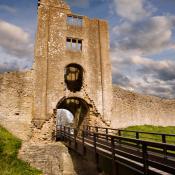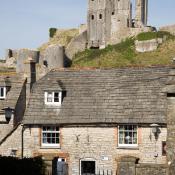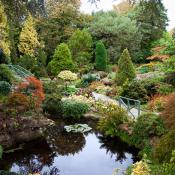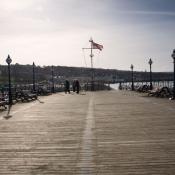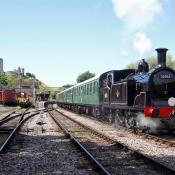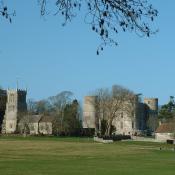
Corfe Castle is a village, civil parish and ruined castle with views stretching across the width of the Isle of Purbeck.
The castle, which overlooks the village, commands a gap in the Purbeck hills between Wareham and Swanage and this important location has given rise to a long and colourful history.
While the oldest surviving structure on the site of the castle dates from the 11th century, burial mounds suggest the area was occupied as far back as 6000 BC and there is evidence of a Celtic field system worked by the pre-Roman tribe known as the Durotriges. There is also much evidence of some kind of pre-Norman stronghold here ('Corfe' is the Saxon word for 'gap') and legend has it that Queen Elfrida had her stepson, King Edward the Martyr, murdered at Corfe in 978 to allow her son Ethelred the Unready to become king.
It is to King Edward that the parish church is dedicated. The church of St Edward is reputed to have been built on the site of a blind woman's cottage to which Edward's body was brought after his murder. The original church was built in the 13th century but be the 1800s had fallen into such a state of disrepair that it was completely demolished with the exception of the tower and rebuilt in 1859.
During Norman Times the castle, whose 'massively thick walls and steep approaches from all sides (made it) one of the most impregnable in the kingdom' was used mostly as a fortress, prison and treasure trove. King John (1166-1216) apparently stashed fifty thousand marks here in preparation for his French campaign.
In the 16th century Elizabeth I sold the castle to her Lord Chancellor, Sir Christopher Hatton, who in turn sold it to Sir John Bankes, the Attorney General to Charles I, in 1635. The castle remained in the Bankes family throughout the Civil War, when it came under siege twice and was bravely defended by Sir John's wife, Lady Mary Bankes, who became known as Brave Dame Mary.
During the second siege, however, the castle was betrayed by a member of the garrison and subsequently destroyed by the Parliamentarians.
After the Restoration of 1660 the Bankes family regained their property, although they elected not to rebuild the Castle at Corfe. The ruined castle and surrounding land remained with the Bankes family right up until the 1980s when Ralph Bankes gave the entire estate to the National Trust.
In 2006 the Trust undertook an urgent three year multi-million pound restoration project. During this period an 'appearance door' was found in the keep. Designed for Henry I, this door indicates that Corfe Castle would have been even more important than was previously thought. One, in fact, of the most important castles in the whole of England. The project was completed successfully in early 2009 and full public access has now been restored.
For an idea of how the castle would have appeared before its destruction by the Parliamentarians, head to Corfe Model Village. Built on a 1/20 scale the model seeks to show the castle and village as it was in 1645.




